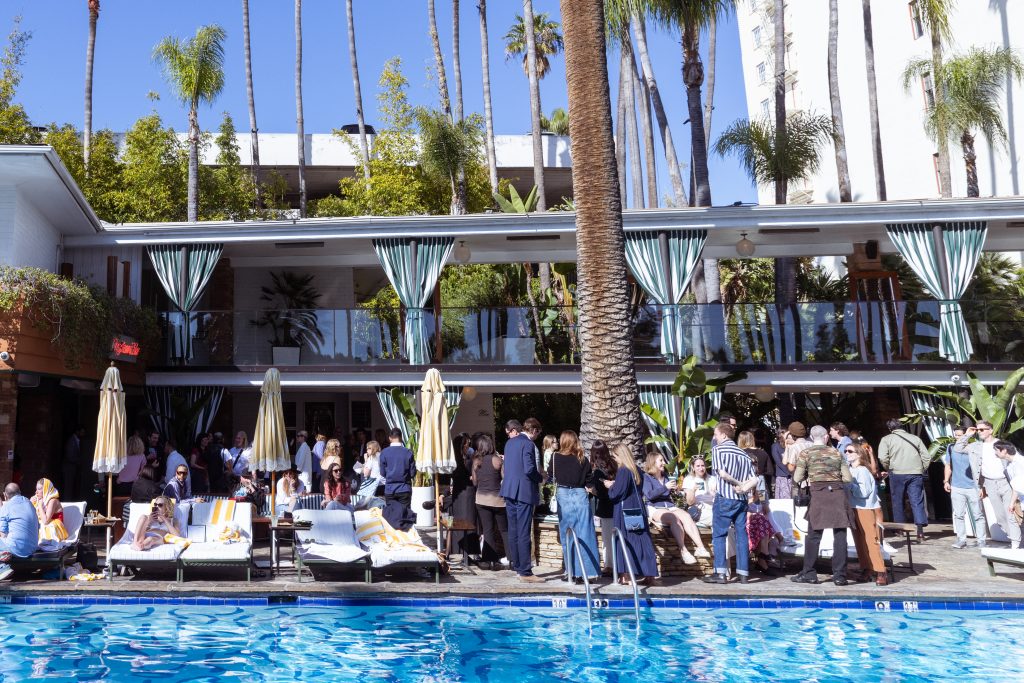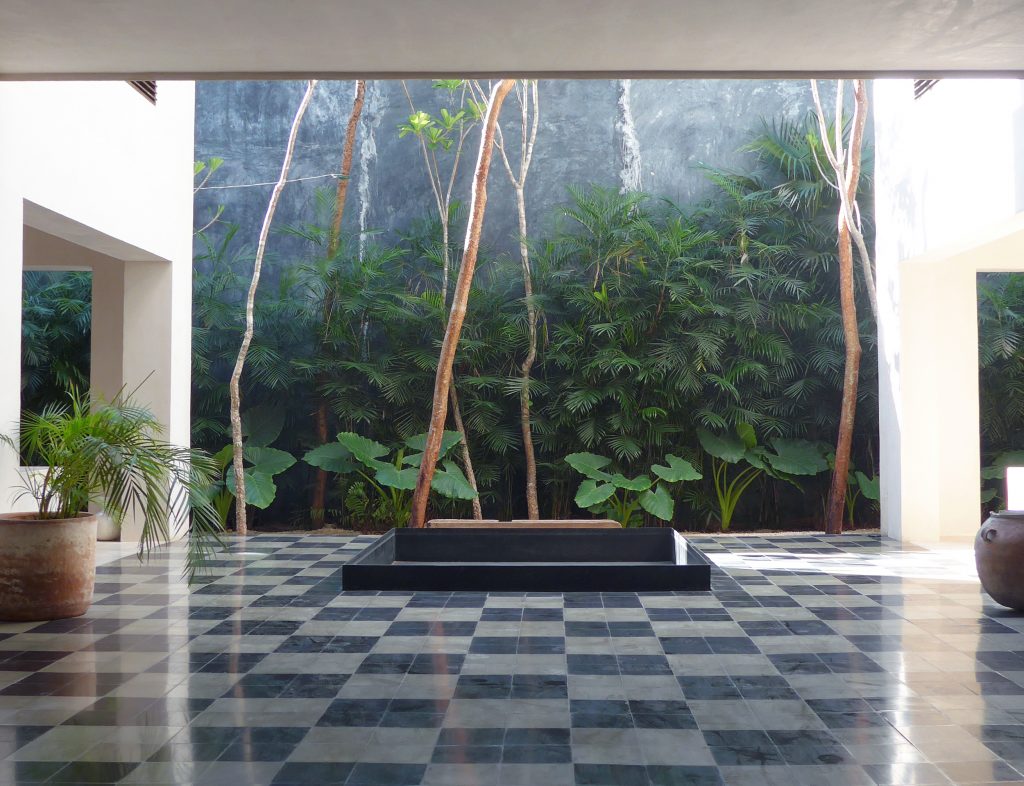The Future Perfect’s Casa Perfect Los Angeles 3.0
An untouched architectural gem from 1971 transformed into a showcase for contemporary design

A walk up the pathway to LA’s new Casa Perfect—an architecturally stunning showroom for art and design gallery The Future Perfect—hints at what will be inside. Lush foliage, with both California and Japanese influences, leads to a massive ’70s-style front door, crafted from elegant dark wood. Push one of the large vertical handles forward to step inside an expansive living room with soft carpet underfoot. Wonder unfolds.
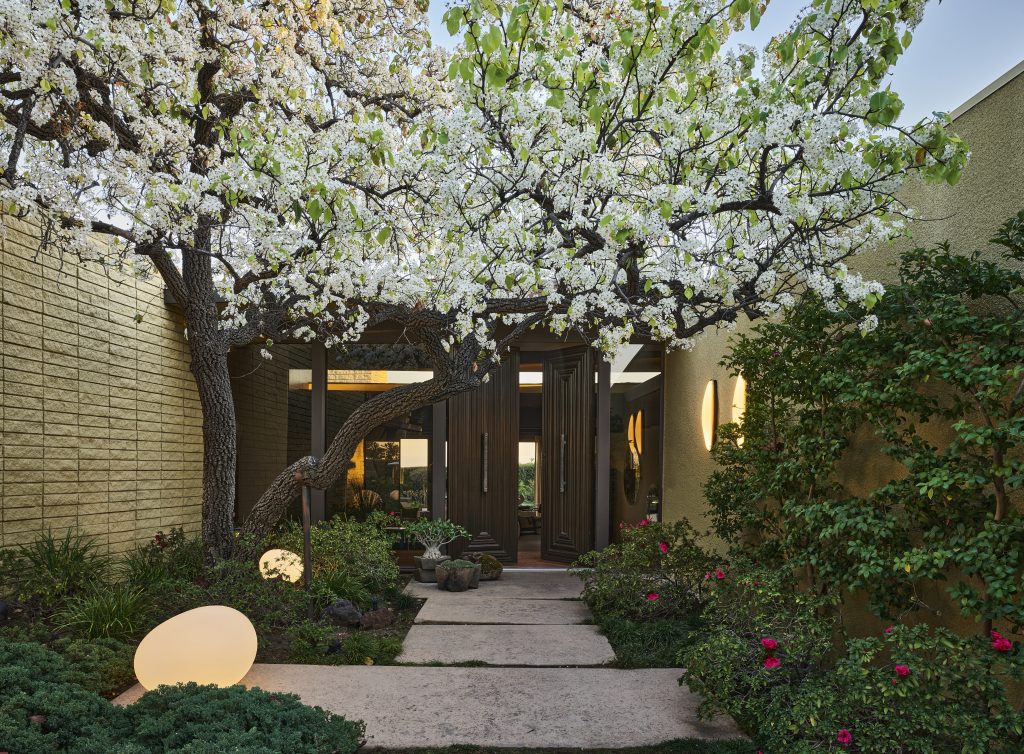
From the entrance, looking out over the sunken living room, it’s easy to observe that the copper-colored, wall-to-wall carpet stretches all the way to the backyard. There, The Future Perfect founder David Alhadeff stands ready to give us a tour of the house and explain why he selected it for the third iteration of Casa Perfect in Los Angeles. First, he makes clear, the home—design by architect Raul F Garduno in 1971—appealed for its sleek lines and Japan-referencing aesthetics. Garduno was a master of hillside homes—and became sought after for the way his modernist residential projects responded to the land, just as this Casa Perfect does.
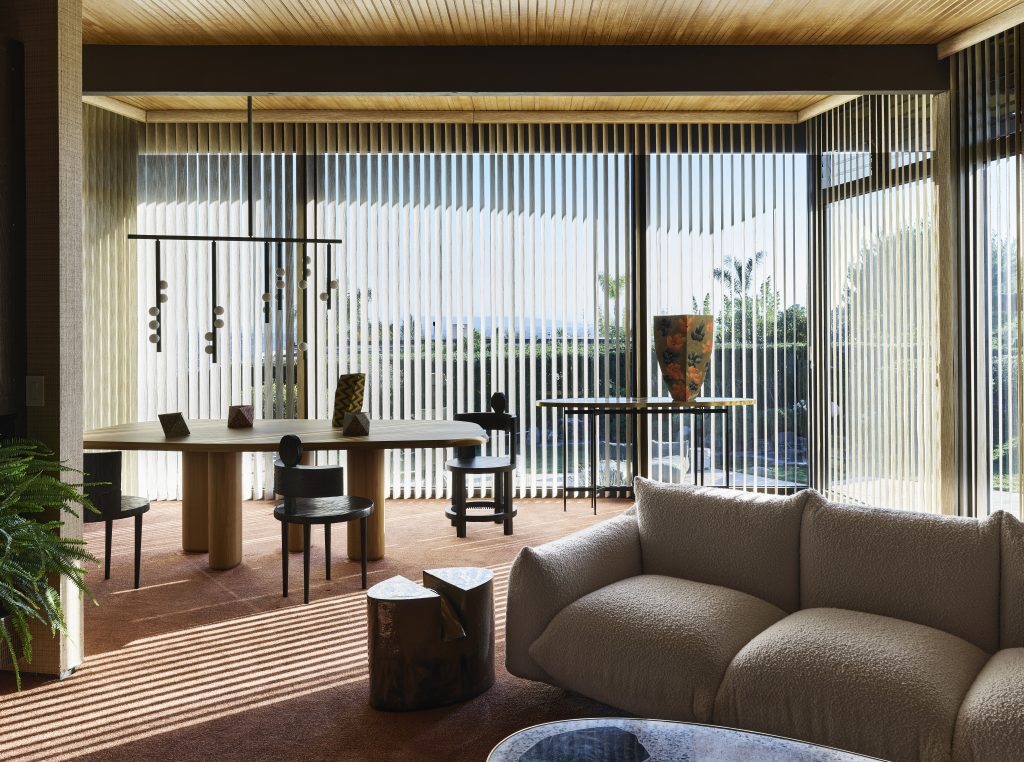
“When it came time to consider what is 3.0. The goal was to change the narrative,” says Alhadeff. “I walked into this home, which is stylistically such a different period of architecture from the last two Casa Perfect houses. It’s very ’70s and it is very pure. [The] home has the least renovations of any of the houses we have been in.”
“With the wall-to-wall carpet, the popcorn ceilings, the fireplaces, and the overall energy in the place, the story has completely changed,” adds Alhadeff. When asked about the carpet, which they installed after taking up the lease, he says “We just had a feeling it would work. We call the color dried maple leaf.”
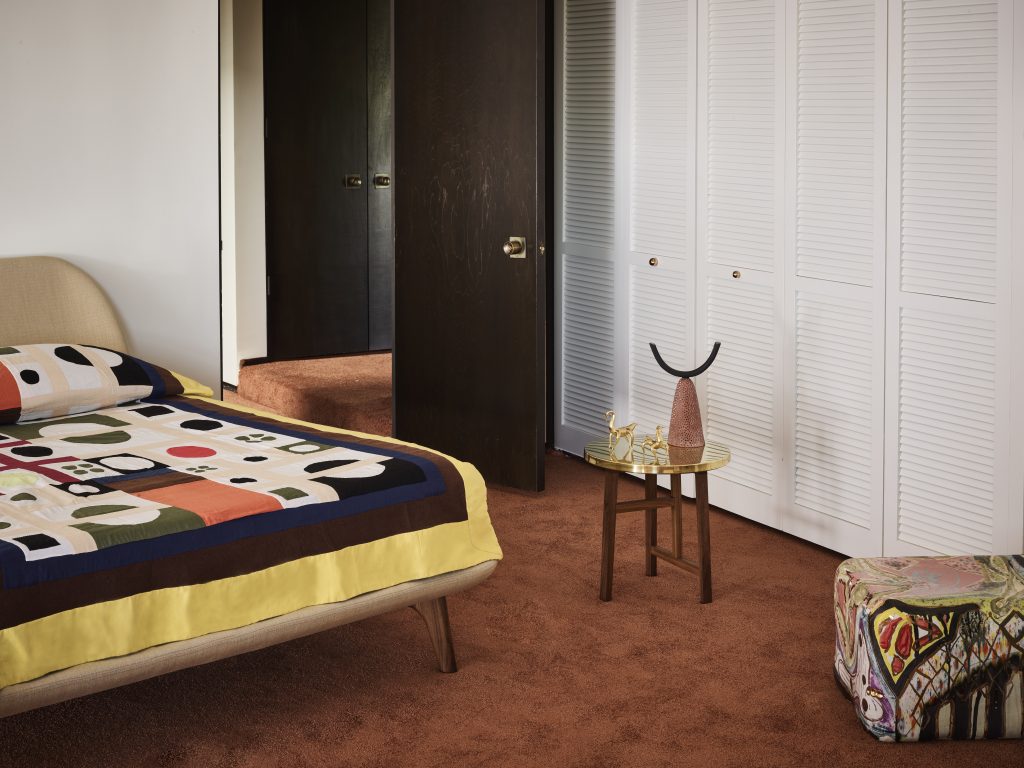
Responding to seeing the work of The Future Perfect’s artists and designer in the new space Alhadeff says, “It’s sexy. It’s elegant. It’s alluring. It’s cozy. When you think about this period and you pull up reference photos, which we did, it was medium pile carpet. I think the color fits the house. When we were doing references, we looked at Tony Duquette. We looked at David Hicks and at other interior decorators of the moment. Every room has wall-to-wall colors.”

Among a mix of hard-to-find, custom, and one-of-a-kind contemporary designs, this new Casa Perfect, which opened its doors during Frieze LA, features an exhibition of new work by Matthew Day Jackson entitled Wonky. Being displayed in a room by the kitchen, two steps up from the hallway, gives the work the feeling of performing on stage.
Jackson fashions these Wonky furniture pieces out of cardboard, epoxy, and fiberglass with automotive paint. Each piece is a unique expression with the materials revealing bubbles, asymmetry, and hand-made nuances. This was part of the reason Alhadeff chose to highlight them in a dedicated room, rather than scatter them throughout the whole house.
 At the end of the hallway, one room features furniture and lighting fixtures by Chris Wolston. Based in New York, Wolston travels to Medellín to fabricate his metal, ceramic, and wicker designs with local artisans. A chair woven out of Colombian mimbre, with anthropomorphic limbs, waves to a metal table reflecting more human appendage imagery, under a vibrantly hued light fixture with foliage shapes. On the other side of the house, in the master bedroom, a wicker tree with curving branches looks at home next to the bed. Outside, Wolston’s terracotta Amador Chair anchors the pool area will a vibrant plant poised on top.
At the end of the hallway, one room features furniture and lighting fixtures by Chris Wolston. Based in New York, Wolston travels to Medellín to fabricate his metal, ceramic, and wicker designs with local artisans. A chair woven out of Colombian mimbre, with anthropomorphic limbs, waves to a metal table reflecting more human appendage imagery, under a vibrantly hued light fixture with foliage shapes. On the other side of the house, in the master bedroom, a wicker tree with curving branches looks at home next to the bed. Outside, Wolston’s terracotta Amador Chair anchors the pool area will a vibrant plant poised on top.
Alhadeff explains why they are showing Wolston’s work in these three contexts: “He is a very important part of our program. He resonates strongly with our client base. We are dedicated to this body of work he is presenting with us. We created a room dedicated to his work like a gallery experience.” Then they placed Wolston pieces in other parts of the house to showcase how they fit into more composed and furnished living spaces.

Continuing to explore up and down the hillside steps shows how the layers of the crescent-shaped house fit so naturally into this Beverly Hills Trousdale Estates location. Further, the home and yard gracefully curves around the pool.
Walking back to the middle of the house, by the front door, and once again looking down into the living room, three round mirrors hang on a wall. Chen Chen & Kai Williams created these Transition Mirrors with cut rocks in this geology-inspired series. Vascular Shelves show more rocks sliced in half to reveal their interior composition. “That work is particularly relevant because they came out here and sourced rocks from hikes they did around Los Angeles,” says Alhadeff “And then they went back and sliced them up and created that work.”
When asked which room he thinks he will spend the most time in Alhadeff quickly responds, “the den.” This room, overlooking the pool and backyard, is filled with natural light that throws geometric stripes from the vertical blinds all day. They placed a large dining table by Collection Particuliere, chairs by ROOMS, a chandelier by Lindsey Adelman Studio, and ceramic pieces by Cody Hoyt near the window. A giant arched mirror anchors the room.
 “The Bower mirror in that space is very Casa Perfect because that room is the most original with the fireplace, the wallpaper, the blinds, and the cork wall,” says Alhadeff. “We left all of these elements [in, during install]. Putting that giant mirror from Bower imposes contemporary into a predominantly original space. And showcasing how those two things work perfectly with each other, that is the nexus of Casa Perfect: historical architecture meets contemporary design.”
“The Bower mirror in that space is very Casa Perfect because that room is the most original with the fireplace, the wallpaper, the blinds, and the cork wall,” says Alhadeff. “We left all of these elements [in, during install]. Putting that giant mirror from Bower imposes contemporary into a predominantly original space. And showcasing how those two things work perfectly with each other, that is the nexus of Casa Perfect: historical architecture meets contemporary design.”
Continuing through the curves of the house, more works by Floris Wubben, John Hogan, Bari Ziperstein, Eric Roinestad, Ben & Aja Blanc, Seungjin Yang, and Christopher Stuart, De La Espada, Calico Wallpaper, David Weeks all add to the overall environment. They emphasize the success behind Garduno’s architectural planning for this sunny Southern California hill.
“Is the fact that the work looks made for the house a coincidence?” wonders Alhadeff. “Maybe that’s why I like the house. The concept of Casa Perfect is to relate the work that we are representing in very different contexts. It’s beautiful up here. It feels so welcoming.” The Future Perfect’s additions have a lot to do with that, undeniably.
Casa Perfect is open by appointment only.
Images courtesy of The Future Perfect

